Chokwe people, Female Statue, Shinji Figure, Uruunda Region (Lower Congo/Angola)
Pagina 1 di 1
 Chokwe people, Female Statue, Shinji Figure, Uruunda Region (Lower Congo/Angola)
Chokwe people, Female Statue, Shinji Figure, Uruunda Region (Lower Congo/Angola)
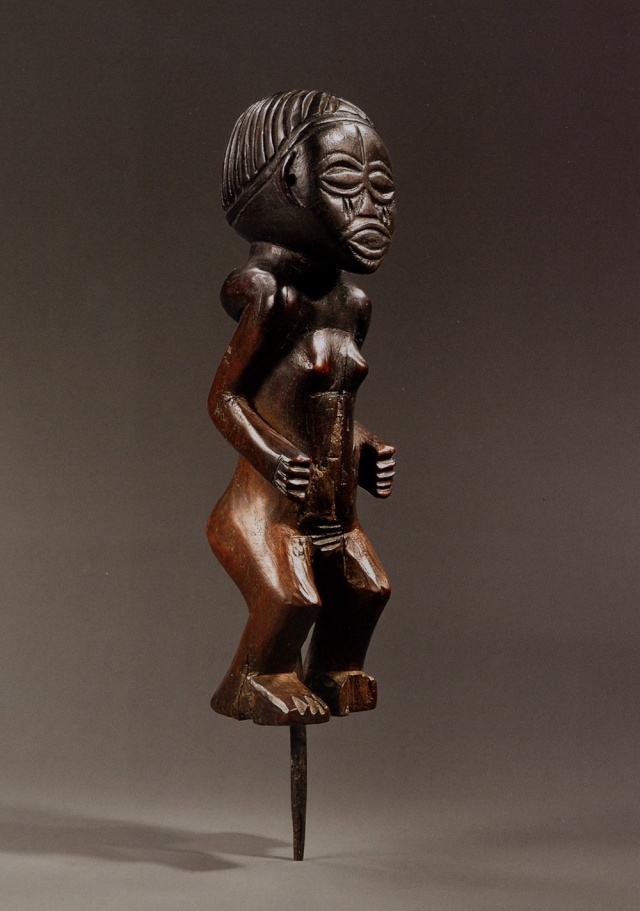
Chokwe people, Female Statue, Shinji Figure, Uruunda Region (Lower Congo/Angola)
Wood with black and brown patina oozing on the face, resinous substance, iron
H.9,4 in/ 22.5 cm
19th century
Private collection, Italy
Photo by Hughes Dubois and Onda Predali
Arti delle Mani Nere All Rights Reserved
Provenance
-Constant Permeke (31. July 1886 Antwerpen - 4. January 1952 Ostende) painter, graphic artist and sculptor. He is looked upon as one of the most important representatives of the flemish expressionism.
-Didier Claes Gallery, Bruxelles
-Richard Carchon coll., Parigi
-Raquel y Guilhem Montagut Gallery, Barcellona
Exhibition
-“Tentoonstelling Afrikaanse kunst en Permeke”, Provinciaal Museum Constant Permeke, West –Vlaanderen, België, 30 oktober/ 27 november 1977
-"Bruneaf, Brussels Non European Art Fair", Bruxelles, XXIII Ed. 05-09/06/2013
-Africa. La terra degli spiriti. Museo delle Culture (Mudec), Milano, 27 marzo/ 30 agosto 2015
Published
-Bettina von Lintig, Hugues Dubois “African Impressions. Tribal Art and Currents of life”, pag. 128, 129 and 233, color
- Bruneaf, Cat. Exposition XXIII Ed, 2013, pag. 96, 97 color
-Connaissance des Arts, n. 716, June 2013, pag. 125, color
-Le Journal des Arts, n.392, Maggio/Giuno 2013, color
-Tribal, n. 68, Sammer 2013, pag. 32 and 65, color
- Elio Revera “Africa. La terra degli spiriti”, Qui Brescia, n.107 Marzo 2015, pag. 106, color
- Elio Revera “Africa. La terra degli spiriti”, Qui Bergamo, Marzo 2015, pag.101, color
-AA.VV, Africa. Terra degli spiriti, a cura di Gigi Pezzoli e Claudia Zevi, 2015, Milano, 24 Ore Cultura ed. pag. 244 color

Like the previous sculpture, this one, most probably, is the representation of a Shinji, that of the female figure related to the cult of initiation in Mwali (M. Jordan).
Like the previous, it is a female sculpture with the head and face sweating for long and repeated libation and rituals purpose. The signs of scarification on the face are the same and in this sculpture, instead of the belt as in the previous one, is visible a set of longitudinal incisions in the pubes.
Two rare Chokwe sculptures that fate brought together in this virtual space.
The presence of cavities on the head, in the stomach and anal used to contain the "magic substance" is attributable to the magical / religious purpose and the possible use of this piece in divination.
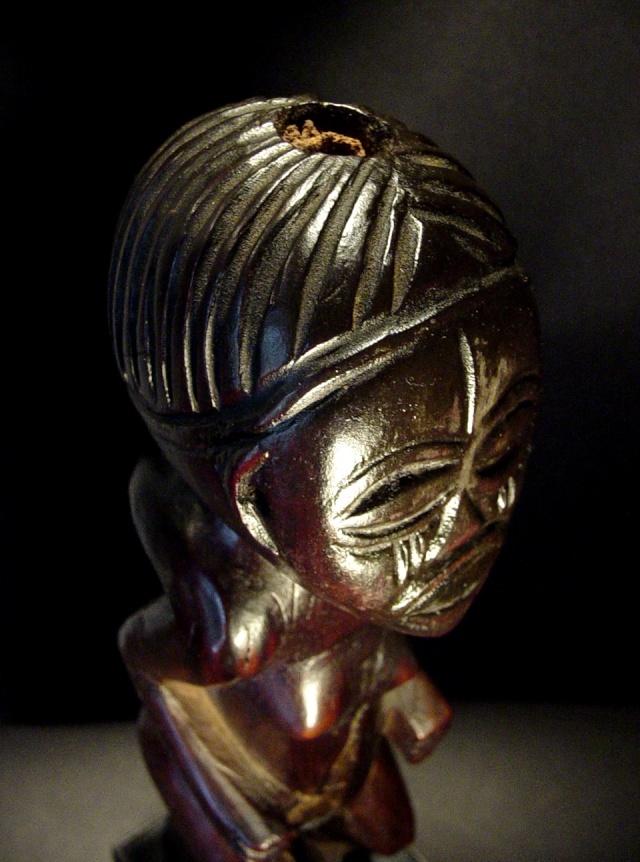
“This compact little object has concise forms. Seem from profile, the figure has a pleasing rhythm. The convex shoulder blades work with the arms to produce a sculptural result which is reminiscent of that seen in works from distant neighbouring groups, such as the Yaka or the Suku. The face and the coif are rendered with linear grooves and incisions. The manner in which the chin comes to a point gives the face a heart-shaped form.

The patina is dark and oozing on the face, and alternates between black and brown on the body.
Is this a representation of a Mukishi of a Hamba, or of both at once? A Hamba (pl. Mhamba) is an ancestral or nature spirit to which a cult is dedicated. Mhamba are represented by trees, pieces of termite mounds, intentionally simplified figurines and by masks”. ( B.von Lintig, 2011)
“Les sociétés sans écriture ont développé des méthodes parfois assez complexes de communication. Parmi celles-ci, on peut situer une des techniques divinatoires des Tshokwe, technique qu'eux-mêmes nomment ngombo y a cisuka, ce qui signifie « technique divinatoire de secouer ». En effet, elle consiste à secouer un ensemble d'objets ( 60/100) dans un panier ou un plateau et à établir une « lecture » des faits à partir de ceux qui, après une secousse, émergent à la surface.

( Courtesy "Journal des africanistes", 1976, Tome 56, Fascicule 1-2, p.p.105/125).
Ngombo, l'esprit de divination. La technique divinatoire ngombo ya cisuka naît dans le cadre rituel de transmission de l’hamba (pl. mahamba), concept fondamental pour définir les croyances magico-religieuses des Tshokwe ; en effet les mahamba réalisent la continuité entre le monde des vivants et celui des morts.C'est ainsi qu'un devin prestigieux ne peut pas disparaître sans que, tôt ou tard, il n'ait transmis son esprit à un de ses familiers par la médiation d'une possession qui, accueillie et maîtrisée dans le rituel, deviendra bénéfique. Le nouveau possédé exercera le métier de son ancêtre et ainsi, la continuité du prestige préservera l'intégrité du groupe.” (M.L. Rodriguez de Areia, 1976)
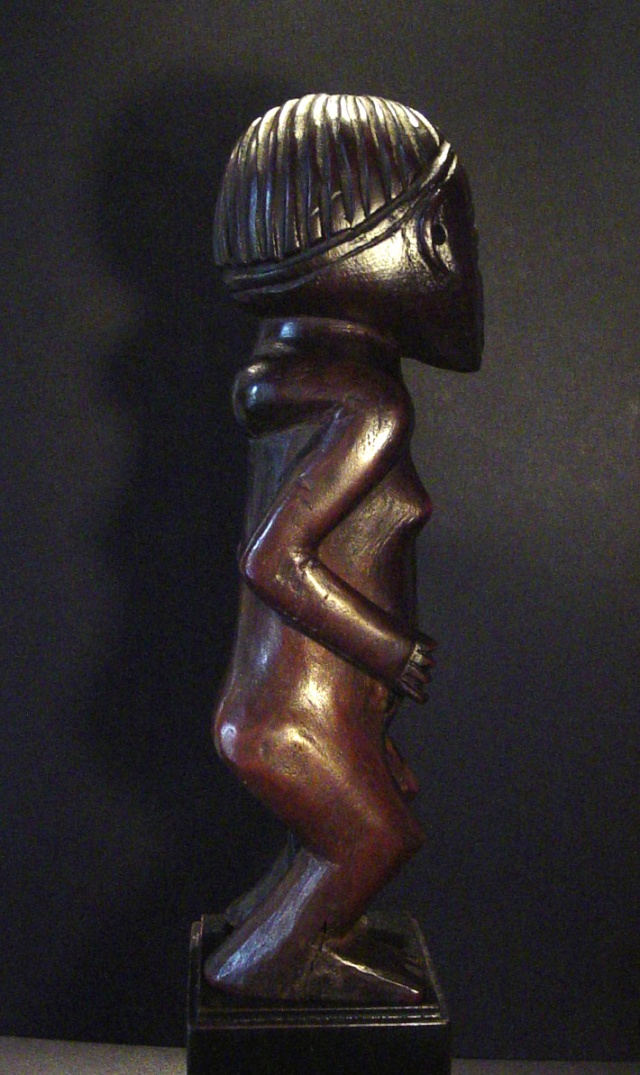
Bibliography
-Bastin, Marie Louise. "Art decoratif tshokwe" 2 vols. Lisbon: Companhia de Diamantes de Angola, Servicos Culturais, 1961
-Rendinha José. “ Portugal Angola. Album Etnográfico”. C.I.T.A ed. Angola, 1967
- Bastin, Marie Louise. “Les styles de la sculpture tshokwe”. Arts d’Afrique Noir 19 (autumn 1976): 16-35
- Bastin, Marie Louise. "La sculpture tschokwe". Meudon, France: A. and F. Chaffin, 1982
- Jordán, Manuel, "Chokwe! Art and Initiation among Chokwe and Related Peoples" (exh. Cat. Birmingham Museum of Art, Alabama). New York: Prestel, 1998.
-von Lintig, Bettina- Dubois, Hughes.”Africans Impressions.Tribal Art and Currents of Life”, Milano, 5 Continents Ed., 2011
(For the Hamba ritual)
-Hauenstein (A.), 1961. “La corbeille aux osselets divinatoires des Tchokwe” , Angola, Anthropos,
LVI, 1-2, 1 14-157.
-Mesquitela Lima (A.G.), 197 1 “Fonctions sociologiques des figurines de culte hamba dans la société et dans la culture tshokwe” (Angola,Luanda, 1. 1. C. A.).
-Milheiros (M.), 1960. “A familia tribal” (Luanda, Museu de Angola).
-Milheiros (M.), 1967. “Notas de Ethnografia angolana” (Luanda, 1. 1. C. A.).
-Santos (E.), 1960, “Sobre a « medicína » e magia dos Quiocos”, Lisbonne, J. I. U.
-Tucker (L. S.), 1940. “The divining basket of the Ovimbundu”, Journ. Roy. Anthr. Inst.,
LXX, 171-201.
-Turner (V. W.), 1961. “Ndembu divination, its symbolism and techniques”, Manchester Uni
versity Press [The Rhodes-Livingstone Paper, n° 31].
-Turner (V. W.), 1971. “Syntaxe du symbolisme d'une religion africaine”, in Le comportement rituel chez l'homme et l'animal (Paris, Gallimard).
-Turner (V. W.), 1972. “Les tambours d'affliction” (Paris, Gallimard).
-White (С. M. N.), 1961. “Eléments of Luvale beliefs and rituals”, Manchester University Press,
Rhodes-Livingstone Paper n° 32.
-Rodriguez de Areia ( M.L.) 1976, “ Le savoir mnémotechnique des Tshokwe de l'Angola” In: Journal des africanistes. Paris, Tome 46, fascicule 1-2. pp. 105-125.

Chokwe people, Female Statue, Shinji Figure, Uruunda Region (Lower Congo/Angola)
Legno a patina marrone e nera sudante sul volto, sostanza resinosa, ferro
H.9,4 in/ 22.5 cm
Sec.XIX
Collezione privata, Italia
Foto di Hughes Dubois e Onda Predali
Arti delle Mani Nere All Rights Reserved
Provenienza
-Constant Permeke (31. July 1886 Antwerpen - 4. January 1952 Ostende) painter, graphic artist and sculptor. He is looked upon as one of the most important representatives of the flemish expressionism.
-Didier Claes Gallery, Bruxelles
-Richard Carchon coll., Parigi
-Raquel y Guilhem Montagut Gallery, Barcellona
Esposizioni
-“Tentoonstelling Afrikaanse kunst en Permeke”, Provinciaal Museum Constant Permeke, West –Vlaanderen, België, 30 oktober/ 27 november 1977
-"Bruneaf, Brussels Non European Art Fair", Bruxelles, XXIII Ed. 05-09/06/2013
-Africa. La terra degli spiriti. Museo delle Culture (Mudec), Milano, 27 marzo/ 30 agosto 2015
Pubblicazioni
-Bettina von Lintig, Hugues Dubois “African Impressions. Tribal Art and Currents of life”, pag. 128, 129 and 233, color
- Bruneaf, Cat. Exposition XXIII Ed, 2013, pag. 96, 97 color
-Connaissance des Arts, n. 716, June 2013, pag. 125, color
-Le Journal des Arts, n.392, Maggio/Giuno 2013, color
-Tribal, n. 68, Sammer 2013, pag. 32 and 65, color
- Elio Revera “Africa. La terra degli spiriti”, Qui Brescia, n.107 Marzo 2015, pag. 106, color
- Elio Revera “Africa. La terra degli spiriti”, Qui Bergamo, Marzo 2015, pag.101, color
-AA.VV, Africa. Terra degli spiriti, a cura di Gigi Pezzoli e Claudia Zevi, 2015, Milano, 24 Ore Cultura ed. pag. 244 color
Come la precedente scultura, anche questa, con verosimile probabilità, è la rappresentazione dell'immagine di una Shinji, ovvero della figura femminile correlata al culto di iniziazione del Mwali ( M. Jordan).
Come la precedente, si tratta di una scultura femminile con la testa ed il viso esudanti per i lunghi e ripetuti versamenti ed utilizzi rituali . I segni di scarificazione sul volto sono gli stessi ed in questa scultura , invece della cintura come nella precedente, è visibile un corredo di incisioni longitudinali nella zona pubica.
Due sculture Chokwe rarissime nella loro tipologia che il destino ha riunito in questo spazio virtuale.
La presenza sul capo, nella parte ventrale ed anale di cavità destinate a contenere la "sostanza magica" è attribuibile alla funzione magico/religiosa a cui era destinata ed al suo probabile utilizzo divinatorio.
.
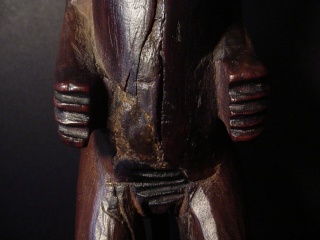
In questo primo piano della parte ventrale sono visibili i tatuaggi denominati "mikonda" praticati al pube della giovane donna durante i riti di iniziazione delle adolescenti.
" Piccola, compatta scultura, dalle forme essenziali. Vista di profilo, la figura ha uno spiccato ritmo dato dalle scapole convesse e dalla soluzione delle braccia; il risultato scultoreo così ottenuto non è immemore da quello di altri popoli non lontani, quali gli Yaka ed i Suku .
Il volto e la coiffure sono resi con incisioni e scanalature lineari. Il mento a punta, dà al viso un’ impronta a forma di cuore. La patina è scura e sudante sulla faccia, e si alterna tra nero e marrone lungo il corpo.
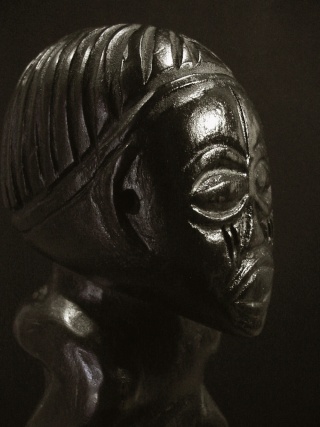
La scultura è forse in relazione con i culti Mukishi o Hamba, o con entrambi allo stesso tempo. L’hamba (pl. Mhamba) è lo spirito ancestrale della natura a cui è dedicato uno specifico rituale nel quale vengono utilizzati legni, pezzi di termitai, figure volutamente semplificate e maschere ". ( B.von Lintig, 2011)
"Le società senza scrittura hanno sviluppato talvolta dei metodi abbastanza complessi di comunicazione talvolta. Tra questi, si può annoverare una delle tecniche divinatorie dei Tshokwe, tecnica che loro stessi chiamano ngombo y a cisuka, che significa " tecnica divinatoria da scuotimento." Infatti, consiste nello scuotere un insieme di oggetti (60/100) contenuti in un cesto da cui consegue una" lettura" dei fatti a seconda della disposizione che hanno assunto gli oggetti medesimi presenti nel cesto.
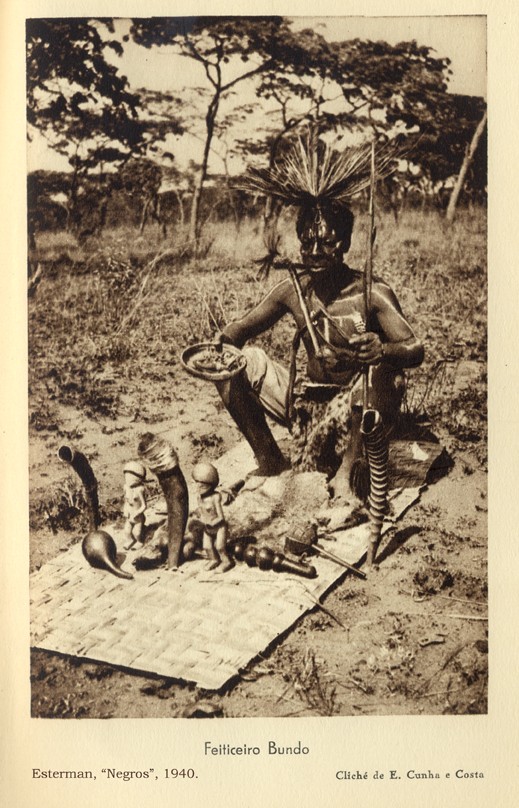
Diviner Uruunda Region ( Courtesy "Negros", Padre Carlos Estermann e Elmano Cunha e Costa, Lisboa 1941 )
….La tecnica divinatoria ngombo y a cisuka nasce nella cornice rituale dello hamba (pl. Mahamba), concetto fondamentale che definisce le credenze magico-religiose dei Tshokwe; compito dei mahamba, infatti, è garantire la continuità tra i mondi dei viventi e quello delle morti.
... Un autorevole diviner non può scomparire senza che, presto o tardi, non abbia trasmesso il suo spirito ad uno dei suoi intimi, attraverso rituali destinati alla trasmissione del suo sapere. Il nuovo diviner eserciterà il mestiere del suo antenato ed in tal modo, la continuità del prestigio acquisito, preserverà l'integrità dell’intero gruppo". (M.L. Rodriguez de Areia, 1976)
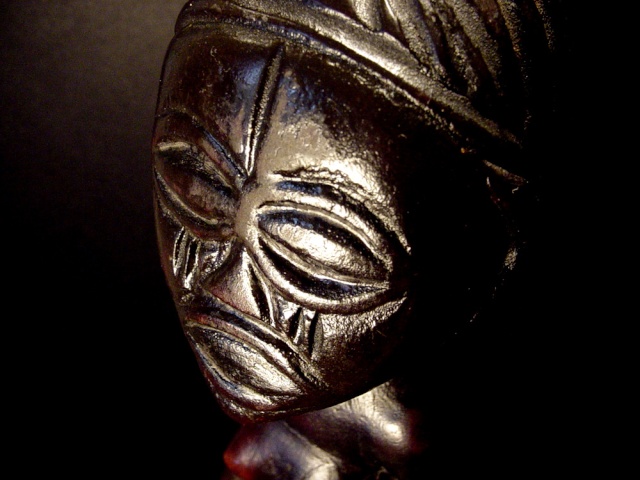
Bibliografia
-Bastin, Marie Louise. "Art decoratif tshokwe" 2 vols. Lisbon: Companhia de Diamantes de Angola, Servicos Culturais, 1961
-Rendinha José. “ Portugal Angola. Album Etnográfico”. C.I.T.A ed. Angola, 1967
- Bastin, Marie Louise. “Les styles de la sculpture tshokwe”. Arts d’Afrique Noir 19 (autumn 1976): 16-35
- Bastin, Marie Louise. "La sculpture tschokwe". Meudon, France: A. and F. Chaffin, 1982
- Jordán, Manuel, "Chokwe! Art and Initiation among Chokwe and Related Peoples" (exh. Cat. Birmingham Museum of Art, Alabama). New York: Prestel, 1998.
-von Lintig, Bettina- Dubois, Hughes.”Africans Impressions.Tribal Art and Currents of Life”, Milano, 5 Continents Ed., 2011
(Per il rituale Hamba)
-Hauenstein (A.), 1961. “La corbeille aux osselets divinatoires des Tchokwe” , Angola, Anthropos,
LVI, 1-2, 1 14-157.
-Mesquitela Lima (A.G.), 197 1 “Fonctions sociologiques des figurines de culte hamba dans la société et dans la culture tshokwe” (Angola,Luanda, 1. 1. C. A.).
-Milheiros (M.), 1960. “A familia tribal” (Luanda, Museu de Angola).
-Milheiros (M.), 1967. “Notas de Ethnografia angolana” (Luanda, 1. 1. C. A.).
-Santos (E.), 1960, “Sobre a « medicína » e magia dos Quiocos”, Lisbonne, J. I. U.
-Tucker (L. S.), 1940. “The divining basket of the Ovimbundu”, Journ. Roy. Anthr. Inst.,
LXX, 171-201.
-Turner (V. W.), 1961. “Ndembu divination, its symbolism and techniques”, Manchester Uni
versity Press The Rhodes-Livingstone Paper, n° 31.
-Turner (V. W.), 1971. “Syntaxe du symbolisme d'une religion africaine”, in Le comportement rituel chez l'homme et l'animal (Paris, Gallimard).
-Turner (V. W.), 1972. “Les tambours d'affliction” (Paris, Gallimard).
-White (С. M. N.), 1961. “Eléments of Luvale beliefs and rituals”, Manchester University Press,
Rhodes-Livingstone Paper n° 32.
-Rodriguez de Areia (M.L.) 1976, " Le savoir mnémotechnique des Tshokwe de l'Angola” In: Journal des africanistes. Paris, Tome 46, fascicule
1-2. pp. 105-125.
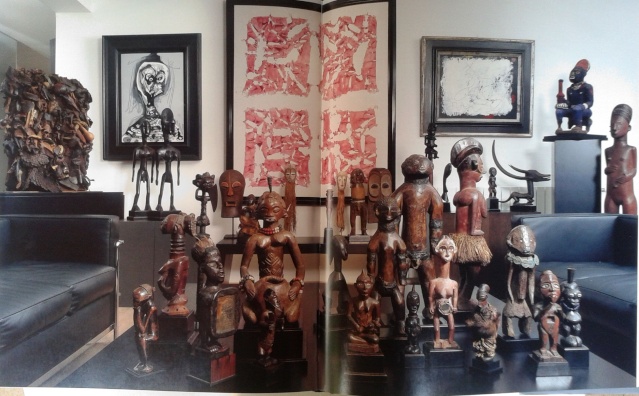
Coll. Richard Carchon, Parigi. La Chokwe con suoi amici di prima! ( Courtesy "African Impressions", 2011)
Pagina 1 di 1
Permessi in questa sezione del forum:
Non puoi rispondere agli argomenti in questo forum.
 Indice
Indice